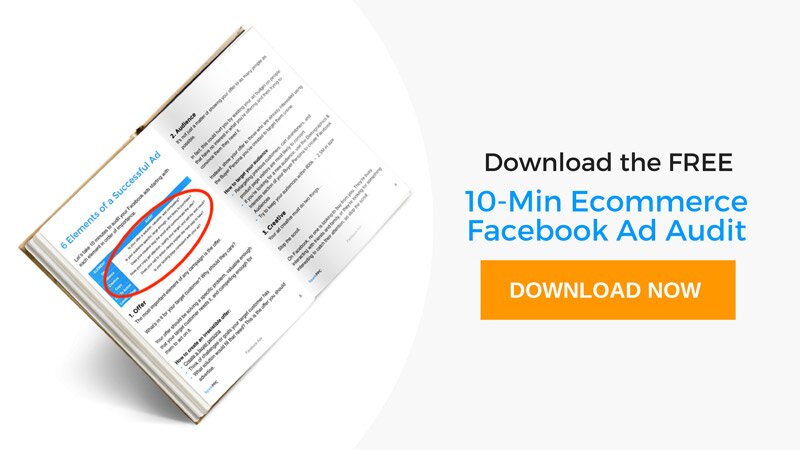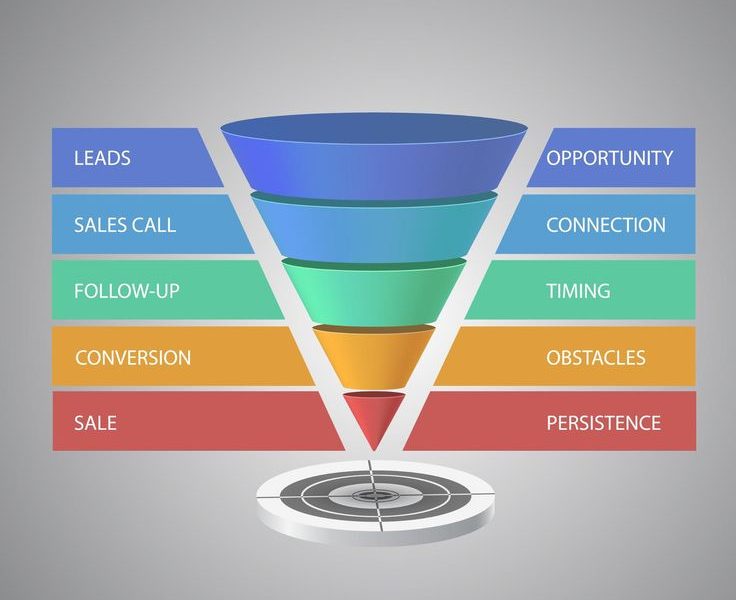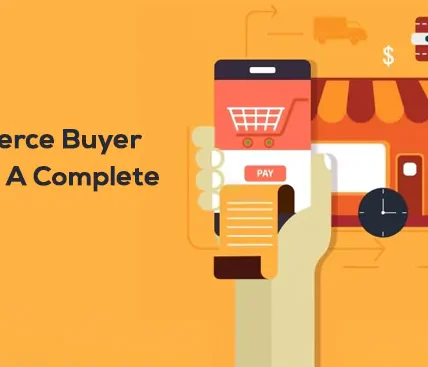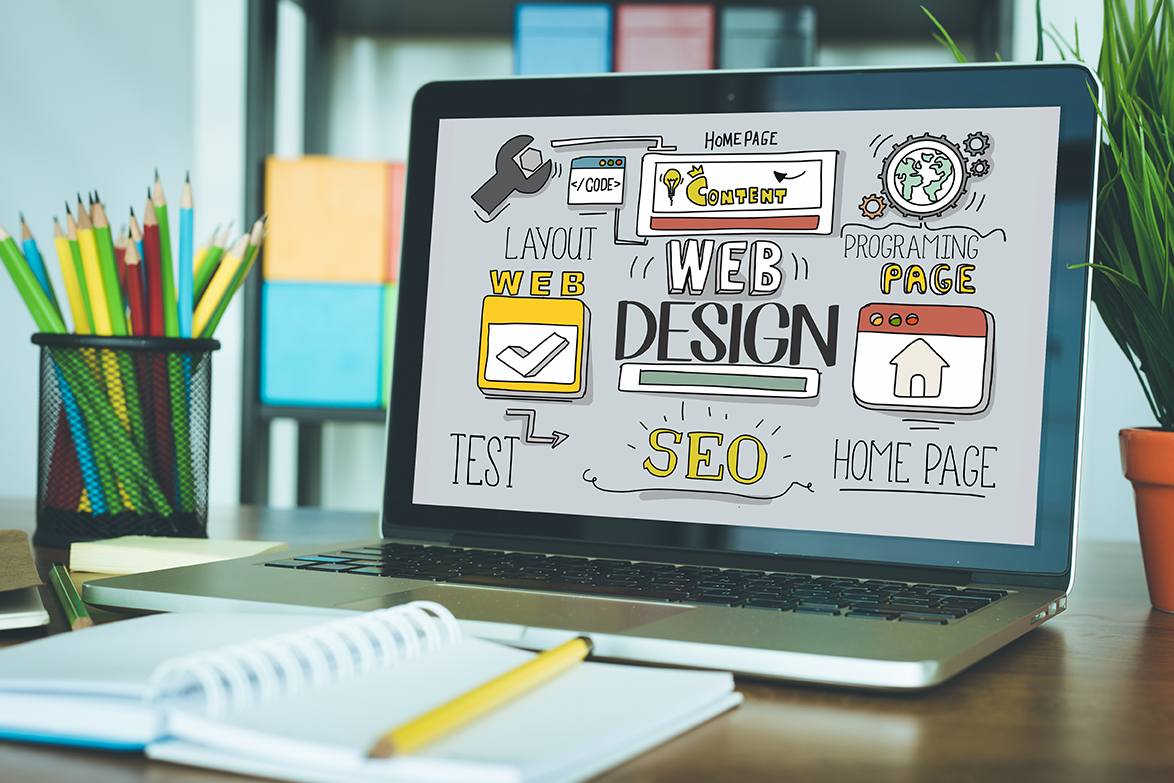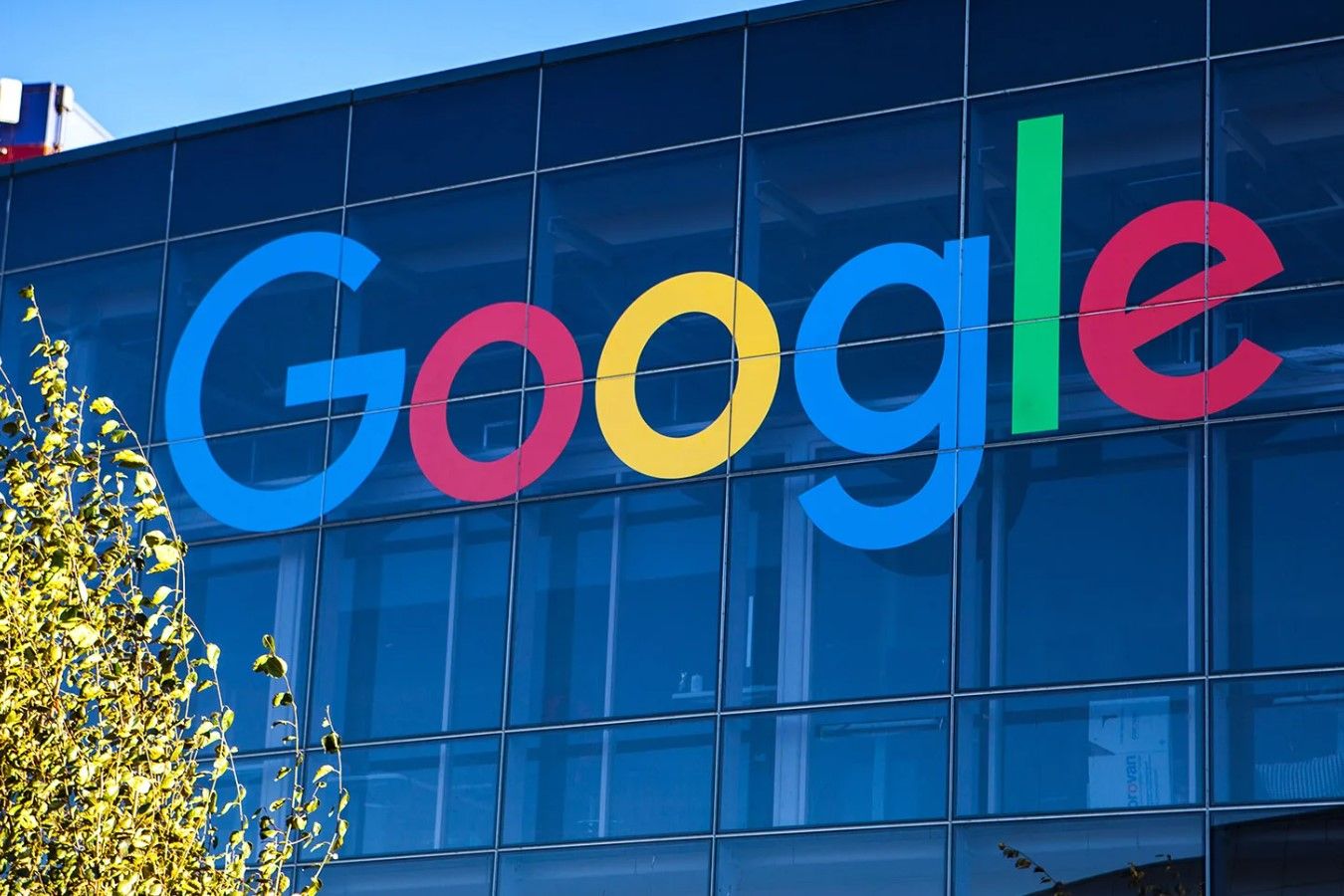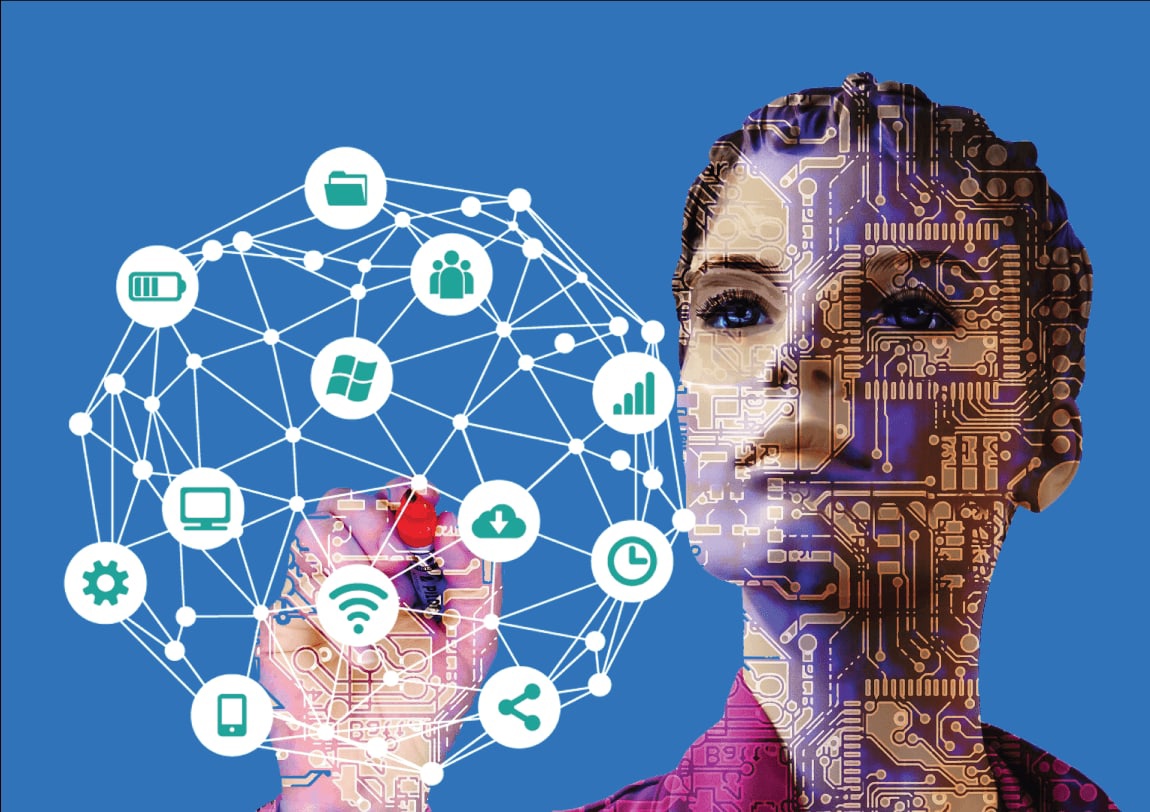Updated for 2018
The conversion funnel.
Often referred to as the sales funnel, marketing funnel, customer funnel, or customer journey; it’s no secret that this sales system is crucial to inbound marketing strategies for driving sales for your ecommerce business.
Ecommerce businesses can implement conversion funnels to generate a steady stream of new and repeat customers.
However, most ecommerce businesses including agencies that manage the marketing strategy for ecommerce businesses don’t have one in place, so they lack the ability to bring in new customers.
Without a conversion funnel, then you’re missing a sales system to generate customers and instead, you’re constantly relying on reaching out for the sale instead of attracting the sale.
If you’ve read this far, then I know you’re looking to do just that.
In this guide you’ll learn:
- What’s a conversion funnel
- The 3 stages of the conversion funnel
- How to create a conversion funnel for your business
- Added bonus…
Let’s begin…
What’s a Conversion Funnel?
A conversion funnel is a multi-channel, multi-step strategy designed to drive targeted leads through to the desired action.
Channels can include a mix of digital ads, content, email, etc. Steps can include clicking on Facebook ads, reading blog posts, and signing up for a lead magnets delivered through emails.
The desired action can be reading a blog post, signing up for a newsletter, purchasing a product or service, etc.
Once a funnel is implemented and optimized, it serves as an automated inbound marketing strategy, a way to drive sales on autopilot!
You’ll be able to acquire leads, activate prospects, and convert them into customers.
What’s the difference?
A lead is someone that falls within your buyer persona that you acquire in the first stage of the funnel. A lead becomes a prospect once they’ve engaged with you. Lastly, a prospects becomes a customer once they’ve purchased from you.
The Conversion Funnel: 3 Stages
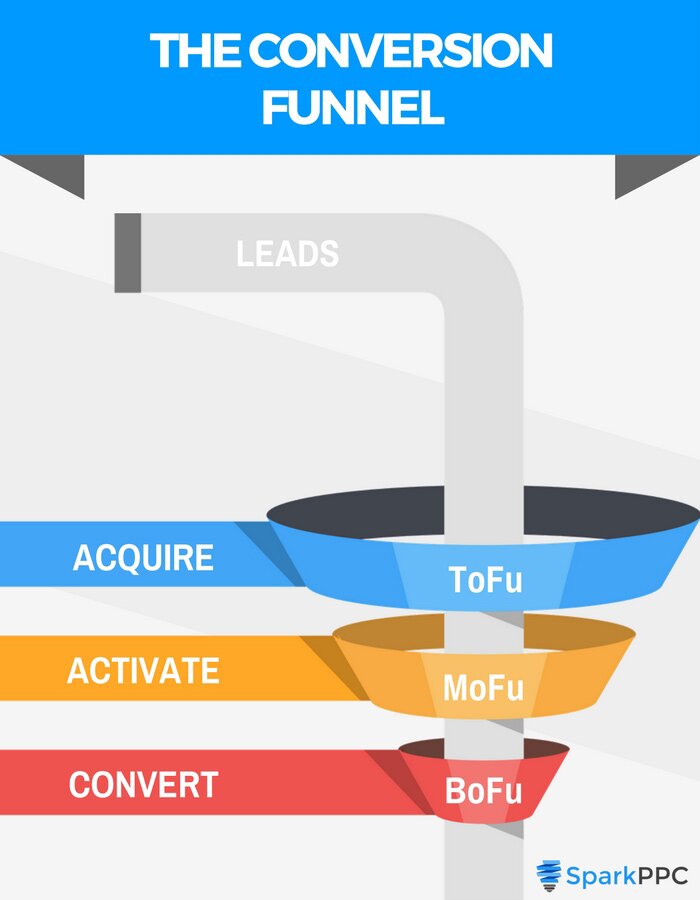
The conversion funnel has 3 stages.
The Acquisition, Activation, and Conversion. Each stage plays a vital role in driving your leads down to a conversion.
Let’s take a look at the importance and role each stage plays in your business…
1. Acquisition – Top of the Funnel (TOFU)

The purpose of the top of the funnel is to acquire targeted leads by getting the attention of your target customer.
At this point, your target audience does not know you, this is your first introduction. Use this introduction to answer who you are, what you do, and how you can position yourself as the solution to the problem your target customers are facing.
Goals of Acquisition include:
- Increasing website traffic
- Increase of brand awareness
- Encouraging content engagement
Accomplish these four goals using a lead magnet. The lead magnet should focus on solving specific problem.
Note: Do not focus on your business, focus on your leads. The Acquisition stage is about providing value up front, not selling.
Types of Acquisition lead magnets include:
- Blog posts
- Cheat sheets
- eBooks
- Infographics
- Newsletter
- Podcasts
- Social media posts
- Videos
Example: If you sell loose leaf tea, an example of a Acquisition content asset is a blog post about how loose leaf tea has far greater health benefits over tea bags. This post creates problem awareness in that tea bag lovers aren’t getting the health benefits of loose leaf tea.
Metrics for Acquisition include:
- Cost per click (CPC)
- Click-through rate (CTR)
- Engagement (video views, likes, comments, shares, podcast listens, etc.)
- Avg. time on page
- Bounce rate
- Retargeting list growth
Your top of the funnel content should drive leads to the next stage of the funnel, Activation.
2. Activation – Middle of the Funnel (MOFU)

The purpose of the middle of the funnel is to activate your leads into prospects by engaging with your customer and inducing a commitment of sorts.
A common misconception by businesses is that you can go straight for the sale after the first interaction. The truth is most people are not ready to buy this early in the relationship. The Activation stage is about building a relationship and trust.
How are relationships built? They’re built by providing value up front.
Goals of Activation include:
- Create a relationship with your lead
- Provide value up front
- Engage with your lead position a low-risk transaction
Accomplish these three goals using special offers. The special offer is a low-risk offer that should fit the need(s) of your buyer persona(s) and introduce your brand as the solution.
Note: The Activation stage is about creating a genuine relationship with your target customer and building trust to position yourself for the sale later down the line. Create low-risk opportunities for engagement such as special offers, a free course, etc. The offer should leave little to no room for objections. Some special offers may not break even, however, getting the sale to your core products or services will become easier.
Types of Activation special offers include:
- Discount/Promotional offers
- Events
- Free (just pay for shipping) offers
- Low-cost additional resources
- Free courses
- Premium eBooks
- Webinars
Example: Within the loose leaf tea blog post, offering a free + shipping mesh ball filter for loose leaf tea as the call to action at the bottom of the post qualifies as Activation. Taking a multi-channel approach by layering in a retargeting ad and emailing them the offer also qualifies. Remember, the special offer is not your core offer, it is a low-risk offer that will later
Metrics for Activation include:
- Cost per desired action (CPDA – Conversion)
- Click-through rate (CTR
- Email open rate
- Retargeting list growth
Your middle of the funnel special offer (free + shipping mesh ball) should be a compliment to your core offer, in this case, loose leaf tea.
3. Conversion – Bottom of the Funnel (BOFU)

The purpose of the bottom of the funnel is to convert your prospects into customers after building a relationship and activating them with your first engagement offer.
Goals of Conversion include:
- Close the sale
- Build customer loyalty
- Create brand advocacy
Accomplish these three goals using your solution. By now your special offer should have introduced your brand and built trust. Your solution, whether products or services, are the next logical step for your ideal customer to take.
Note: Focus on the solutions your products or services provide. In the Conversion stage, your core offer is introduced as the solution to their goals and challenges stated in your buyer persona. Engage with your ideal customers to deliver your core offer.
Ways to deliver Conversion core offers include:
- Consultations
- Demos
- Free Class
- Free Trials
- Strategy sessions
- Webinars
Example: After your Activation audience purchases the free + shipping mesh ball filter for loose leaf tea, introduce the upsell to your core offer: loose leaf tea. Sweeten the pot with a limited time discount that expires within the hour. Additionally, again take a multi-channel approach by layering in a retargeting ad and emailing them the core offer.
Metrics for Conversion include:
- Cost per desired action (CPDA – Conversion)
- Click-through rate (CTR
- Email open rate
- Average order size
- Cart abandonment rate
- Customer retention rate
- Retargeting list growth
The follow-up in the Conversion stage is crucial. Layering in a multi-channel approach will drive more sales to your business.
How to Create a Marketing Conversion Funnel
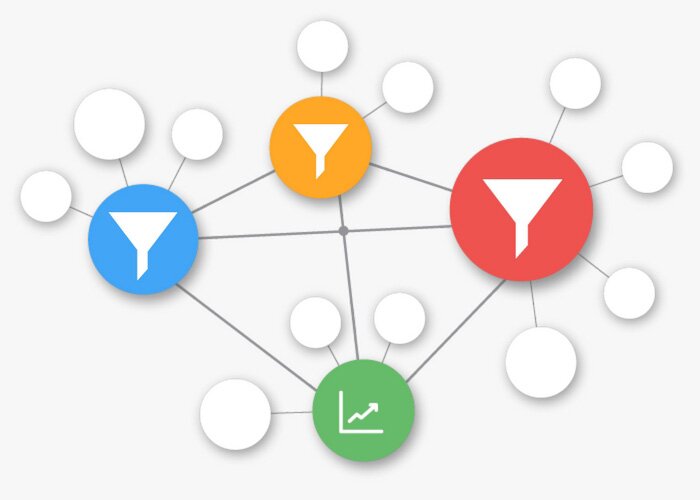
Now that you’ve learned the 3 stages of a conversion funnel, let’s get started on creating your funnel.
1. Define your core offer
First, start with the end in mind by defining your core offer. What product or service do you sell? This is your end goal.
2. Establish your special offer
After you’ve defined your core offer, define your special offer. What low-cost, low-risk offer could you make to your target customer? It’s best to come up with a special offer that inevitably leads to a purchase of your core offer.
3. Create your lead magnet
The same rules apply with the lead magnet. What lead magnet can you create that makes it logical to purchase the special offer? The lead magnet should address your buyer persona’s goals or challenges and offer a “quick win”.
4. Choose your channel
Lastly, choose the channel(s) you’d like to leverage to drive leads to your lead magnet. How will you promote your lead magnet? Digital ads? Organic traffic? Email? Social media?
5. The fortune is in the follow-up
Think about the series of steps your leads will have to take from the start of your funnel to the end. Most leads will not make it past the ToFu stage, even less will make it past the MoFu stage. So, you can only image how many leads will make it to the BoFu stage and convert into a sale.
How do you give yourself a competitive advantage? Following up.
Follow-ups are reminders for your leads to take the next step down your funnel. They can come in the form of email follow-ups, retargeting ads, or other methods of communication.
Now It’s Your Turn
Now you have all the steps involved in creating an optimized conversion funnel for your business. The last step is for you to execute an optimized conversion funnel of your own.
Looking for a “done for you” solution?
Audit your Facebook ad in 10 minutes with this FREE guide.
